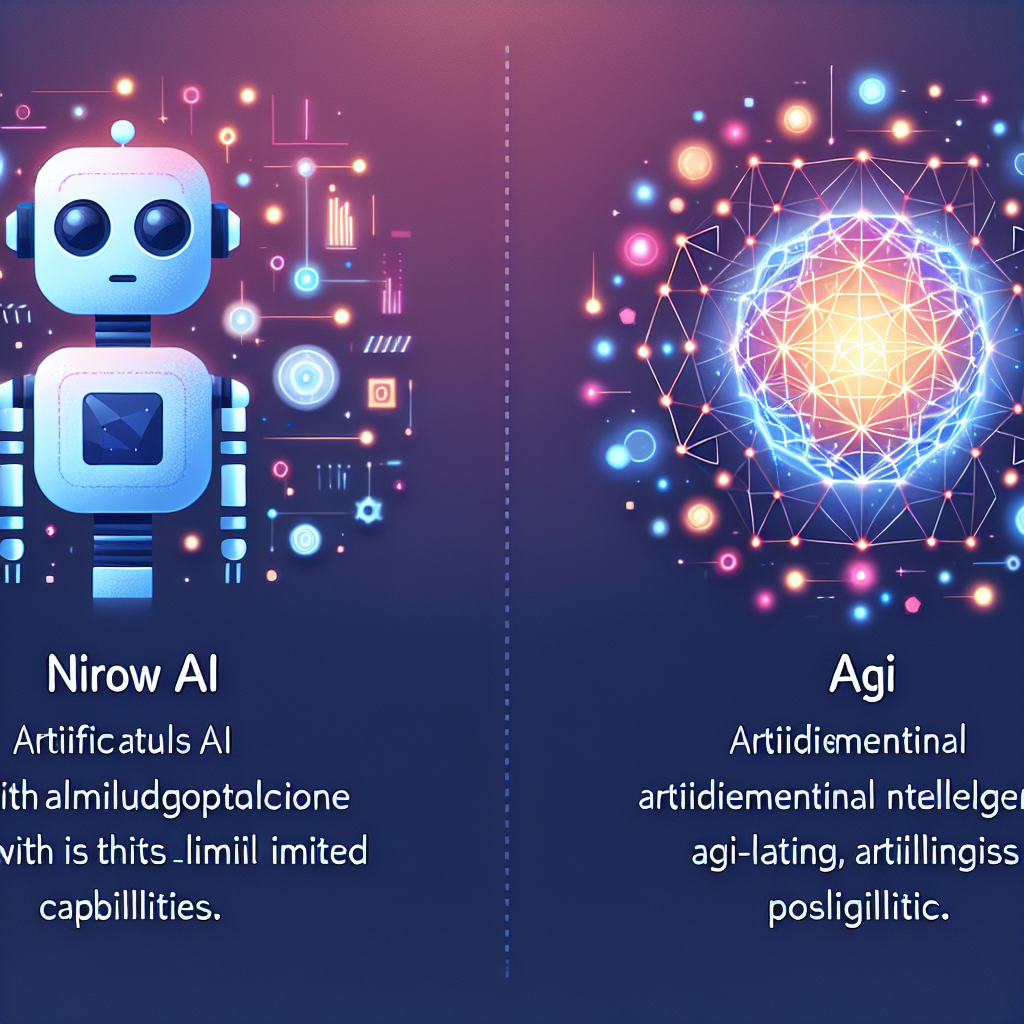Artificial Intelligence (AI) has become an increasingly prevalent topic in today’s society, with the potential to revolutionize industries and improve our daily lives. However, there are different types of AI, each with varying levels of capabilities and functions. Two prominent categories of AI are Artificial General Intelligence (AGI) and Narrow AI. Understanding the differences between these two types of AI is crucial for grasping the potential impact of AI on society and the future of technology.
AGI vs. Narrow AI: Understanding the Difference
Artificial General Intelligence (AGI) refers to AI systems that have the ability to understand, learn, and apply knowledge in a wide range of tasks that a human being can perform. AGI is often likened to human intelligence, as it can adapt to new situations, learn from experience, understand complex concepts, and perform a variety of tasks without specific programming for each task.
In contrast, Narrow AI, also known as Weak AI, refers to AI systems that are designed for specific tasks or functions. Narrow AI is limited in scope and can only perform a specific task or set of tasks for which it is programmed. Examples of Narrow AI include virtual assistants like Siri and Alexa, recommendation algorithms on websites like Netflix and Amazon, and self-driving cars.
The main difference between AGI and Narrow AI lies in their capabilities and flexibility. AGI has the potential to perform a wide range of tasks and adapt to new situations, while Narrow AI is limited to specific tasks and functions. AGI has the ability to reason, plan, solve problems, understand language, and learn from experience, making it more versatile and intelligent than Narrow AI.
Why It Matters
The distinction between AGI and Narrow AI is important for several reasons. First, understanding the capabilities and limitations of each type of AI can help us better grasp the potential impact of AI on society and the future of technology. AGI has the potential to revolutionize industries, transform the way we work and live, and even surpass human intelligence. Narrow AI, on the other hand, is more focused on specific tasks and functions, making it more suitable for applications like customer service, healthcare, and retail.
Second, the development and deployment of AGI raise ethical and societal concerns that must be addressed. AGI has the potential to outperform humans in many tasks, leading to concerns about job displacement, economic inequality, and the potential misuse of AI for malicious purposes. Understanding the differences between AGI and Narrow AI can help us navigate these ethical and societal challenges and ensure that AI is developed and used responsibly.
Finally, the distinction between AGI and Narrow AI is important for researchers and developers working in the field of AI. AGI is still a theoretical concept that has not been achieved yet, while Narrow AI is already being deployed in various industries and applications. By understanding the differences between these two types of AI, researchers and developers can better focus their efforts on developing AI systems that are capable of achieving AGI while also addressing the practical challenges of deploying Narrow AI.
FAQs
Q: Can Narrow AI evolve into AGI?
A: While Narrow AI can be trained to perform specific tasks more efficiently, it is unlikely to evolve into AGI on its own. AGI requires a level of flexibility, adaptability, and general intelligence that Narrow AI does not possess. Researchers and developers are actively working on developing AGI, but it remains a challenging and complex goal.
Q: What are some examples of AGI in popular culture?
A: AGI is a common theme in science fiction, with examples like HAL 9000 from 2001: A Space Odyssey, Ava from Ex Machina, and Samantha from Her. These fictional portrayals of AGI showcase the potential capabilities and implications of artificial general intelligence.
Q: How can AGI benefit society?
A: AGI has the potential to revolutionize industries, improve healthcare outcomes, enhance education, and solve complex problems that humans struggle to solve. AGI can also streamline processes, increase efficiency, and lead to new innovations and discoveries.
Q: What are the risks associated with AGI?
A: The development and deployment of AGI raise ethical and societal concerns, including job displacement, economic inequality, privacy violations, and the potential misuse of AI for malicious purposes. Ensuring that AGI is developed and used responsibly is crucial for mitigating these risks.
In conclusion, the distinction between AGI and Narrow AI is crucial for understanding the potential impact of AI on society and the future of technology. While AGI has the potential to revolutionize industries and surpass human intelligence, Narrow AI is more focused on specific tasks and functions. By understanding the capabilities and limitations of each type of AI, we can navigate the ethical, societal, and practical challenges of AI development and deployment.

